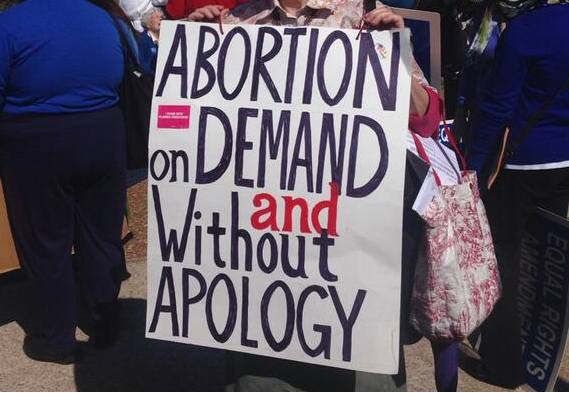

Steven Ertelt | Jan 26, 2022
Pro-abortion feminists groups are renewing their push to create an Equal Rights Amendment, this time by urging the president, attorney general and national archivist to ignore all legal authority and add it to the U.S. Constitution more than 40 years after the deadline.
The Christian Post reports several pro-abortion feminist groups are behind the push, including the National Organization for Women. On Thursday, they announced plans to hold a press conference to demand that the ERA be added to the Constitution.
Pro-abortion feminists say the amendment will guarantee equal rights for all citizens no matter what their sex is, but pro-life leaders warn that the amendment will be used to create a “right” to abortion on demand.
According to the report, U.S. Sen. Ben Cardin, of Maryland, and U.S. Rep. Carolyn Maloney, of New York, will be among the speakers, joining Carol Jenkins of the ERA Coalition and Fund for Women’s Equality, Christian Nunes of the National Organization for Women, Eleanor Smeal of the Feminist Majority Foundation, Donna Lent of the National Women’s Political Caucus and Sophia Armen of the Feminist Front.
Follow LifeNews.com on Instagram for pro-life pictures and videos.
In 2020, Virginia became the 38th and final state needed to ratify the amendment. However, it did so more than 40 years after the deadline set by Congress. What’s more, several other states later rescinded their votes to ratify the amendment after learning that it would be used to create a “right” to abortion on demand.
This means that the ERA is dead. But pro-abortion groups are trying desperately to resurrect it, likely out of fear that the U.S. Supreme Court may overturn Roe v. Wade later this year and allow states to protect unborn babies from abortion again.
Douglas Johnson, director of the National Right to Life Committee’s ERA Project, said every judge has rejected attempts to resurrect the pro-abortion amendment.
“In 40 years, not a single federal judge has accepted a single element of the legal claims made by ERA-revival litigants …” Johnson said.
He slammed the pro-abortion groups for mounting “an assault on the integrity of the constitutional amendment process itself,” but he predicted that they will not succeed.
Johnson said some of the groups also are trying to convince the U.S. Senate to vote on an unconstitutional measure to extend the 1979 deadline so that the ERA can be ratified.
Along with Virginia, Nevada and Illinois also ratified the ERA after the deadline. According to the Christian Post, the attorneys general of Nevada and Illinois filed a lawsuit to require the U.S. Archivist to add the ERA to the Constitution, and NOW and other groups are submitting an amicus brief in support of their case.
“Publication by the Archivist is an important step forward. To be sure, the legal effect of an amendment does not depend on any action by the Executive Branch, which has no role to play under Article V,” their brief states. “But the Archivist’s current refusal to publish the ERA is itself an inappropriate intrusion of the Executive Branch into the ratification process.”
But other states are fighting back. Alabama, Louisiana and South Dakota filed a lawsuit challenging the ratification of the ERA. South Dakota is one of the states that rescinded its ratification of the ERA – and it did so within the deadline, according to its lawsuit.
Though the intent of the ERA seems good on the surface, pro-life leaders long have warned that abortion activists would use it to destroy the limited protections that America provides to unborn babies. Under the amendment, even widely-supported abortion regulations such as the partial-birth abortion ban and parental consent for minors could be overturned. It also could force taxpayers to pay for abortions, something polls consistently show most Americans oppose.
Congress approved the ERA in 1972 and sent it to the states for ratification. To amend the U.S. Constitution, two thirds of the state legislatures must vote to approve it, as well as Congress; and states did not meet the threshold by the 1979 deadline.
more recommended stories
 Fentanyl Seizures at Border Continue to Spike, Making San Diego a National Epicenter for Fentanyl Trafficking
Fentanyl Seizures at Border Continue to Spike, Making San Diego a National Epicenter for Fentanyl TraffickingFentanyl Seizures at Border Continue to.
 Utah Man Sentenced for Hate Crime Attack of Three Men
Utah Man Sentenced for Hate Crime Attack of Three MenTuesday, August 8, 2023 A.
 Green Energy Company Biden Hosted At White House Files For Bankruptcy
Green Energy Company Biden Hosted At White House Files For BankruptcyAug 7 (Reuters) – Electric-vehicle parts.
 Former ABC News Reporter Who “Debunked” Pizzagate Pleads Guilty of Possessing Child pδrn
Former ABC News Reporter Who “Debunked” Pizzagate Pleads Guilty of Possessing Child pδrnFriday, July 21, 2023 A former.
 Six Harvard Medical School and an Arkansas mortuary Charged With Trafficking In Stolen Human Remains
Six Harvard Medical School and an Arkansas mortuary Charged With Trafficking In Stolen Human RemainsSCRANTON – The United States.
 Over 300 People Facing Federal Charges For Crimes Committed During Nationwide Demonstrations
Over 300 People Facing Federal Charges For Crimes Committed During Nationwide DemonstrationsThe Department of Justice announced that.
